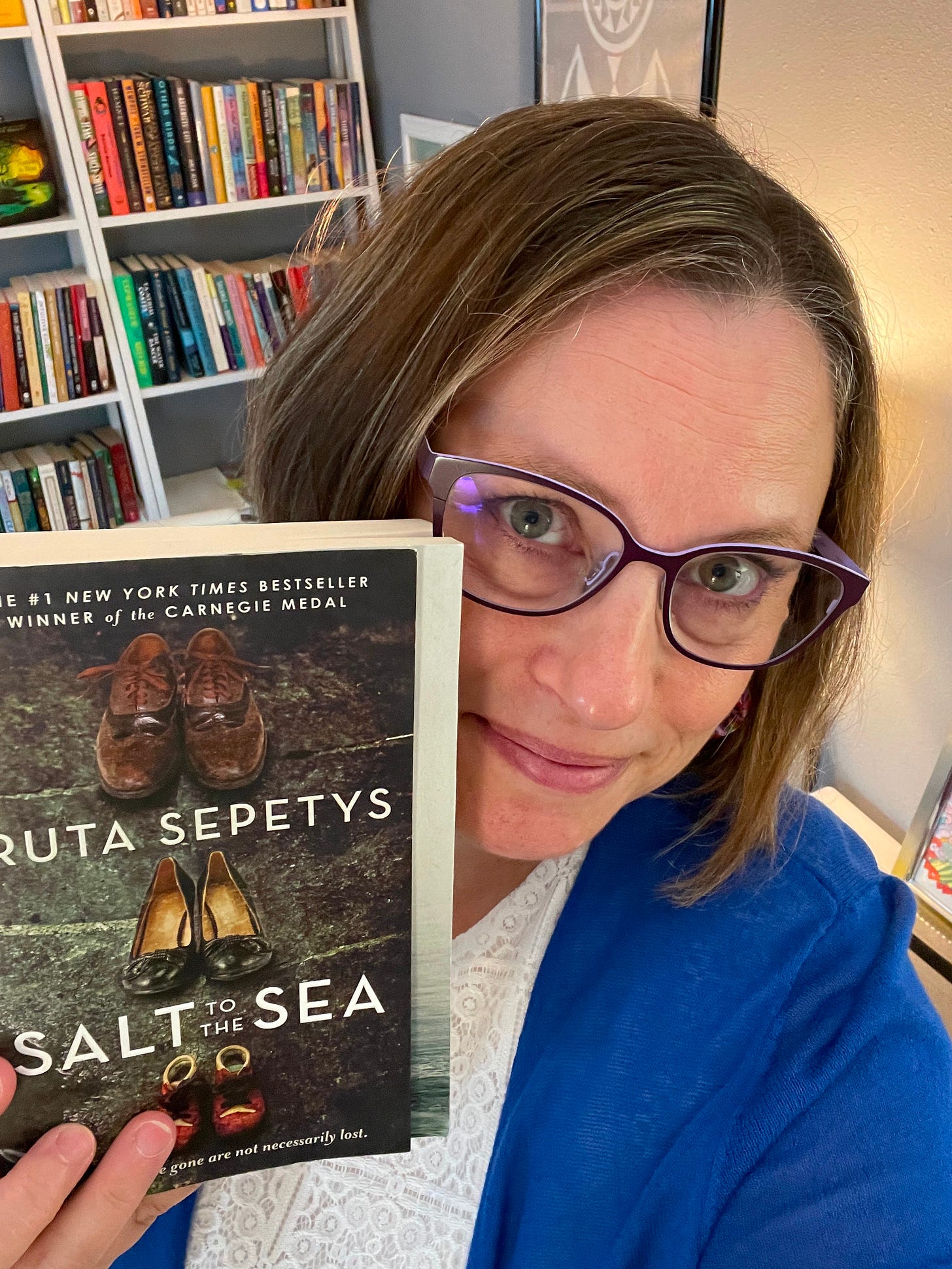
In the monthly Reading Like Writers Book Club, we examine a published book-length story to excavate the three components of the “groundwork” we talk about around here.
At the end you’ll have access to a conversation I had with my friend about the book. Remember, reading like writers helps us become better writers. Come along, my friend!
Disclaimer #1: Spoilers are imminent. If you want to save this post for after you’ve read the book, please feel free! But much can be learned from a discussion of a story even if you haven’t read it, so I encourage the rest of you to read on.
The Groundwork for a Story:
Message: what the author is trying to say to the reader about the human experience
Character Arc: how the character(s) change internally from the beginning to the end (usually related to the message)
Turning Points: 2-3 key plot points that affect this change in the character’s arc, and how.
September’s Read: Salt to the Sea, by Ruta Sepetys
The Message
Disclaimer #2: authors can’t control what message a reader takes away from the story. Without talking with the author, there is no way to know what they actually intended! But this is my takeaway…
The obvious front-and-center intention of this book is to describe a largely untold story of WWII from young people’s perspectives, and to educate the reader about the sinking of ships intended to transport citizens to safety, killing tens of thousands. Given that this book is widely studied in high school classes, it is definitely serving that intention in the world.
When I considered the emotional journey of the three characters who are fleeing for safety - Florian, Joana, and Emilia - I felt that an additional message Sepetys was trying to convey was that we all carry with us things from the past, and that those things don’t have to define who we are.
If you read Salt to the Sea, please drop a comment about any overarching messages you took away from it!
Character Arcs
There are four point-of-view characters in this novel, meaning that each has a different character arc. I found the character Alfred (the low-ranking Nazi soldier) to have a fairly flat arc, so I’m not including him here. (Colleen and I discuss Alfred more in our book chat below.)
1. Joana
Joana’s misbelief: Her role is to be good, to be a helper, to make things easier for others. Anything short of that is not an option.
How it changes: She finally admits to the innocent mistake she made in writing a letter to her cousin, which resulted in the cousin’s family being killed by the Nazis. She releases that guilt and some of the walls around her that resulted from her guilt.
2. Florian
Florian’s misbelief: He has taken on a personal mission, and in doing so has convinced himself that he can’t rely on anyone else. He has to be strong and invulnerable.
How it changes: He allows Joana and the others to help him and learns that it’s okay to rely on others and let them into his heart.
3. Emilia
Emilia’s misbelief: She has no control over anything. She has been victimized, and her trauma response is to hide, both physically and emotionally.
How it changes: Over the course of the story, she finds her own voice and power.
Turning Points
There are many turning points in any novel. I’ve chosen a few to illustrate how plot events and character arcs are tied together.
When all three characters come together in the barn, Florian and Emilia both receive help from Joana and meet the rest of the party she is traveling with. This is the first moment that each of them are confronted with a new (if temporary) reality and emotionally engage with each other, which bumps against their misbeliefs (see above.)
When the refugees try to cross the ice and the ice is bombed from above, Joana realizes she can’t prevent the deaths of people she cares for. It is a low point in her character arc. Florian, who had abandoned the group out of self-preservation, is the one who pulls her to safety, showing a crack in his emotional walls. Emilia is proving to herself once again that she can survive impossible situations.
When the characters are waiting to board the ship, Florian realizes that it’s okay to receive help and care from others. He and Joana open up to each other, allowing both of them to be vulnerable.
Book Chat with Colleen
Disclaimer #3: I am reading like a writer in an attempt to become a better writer. I’m sure there were things I missed or misunderstood. That’s why conversation is important!
Here is my conversation about Salt to the Sea with my friend
!Let’s discuss! What observations, A-Ha’s, or questions came up for you in reading this post or reading Salt to the Sea? Let us know in the comments!
🍂 October’s book:
The Nest, by Cynthia D'Aprix Sweeney
Look for the Groundwork of the Story:
Message: what the author is trying to say to the reader about the human experience
Character Arc: how the character(s) change internally from the beginning to the end (usually related to the message)
Turning Points: 2-3 key plot points that affect this change in the character’s arc, and how.
Happy reading!
Warmly,
Stephanie
P.S. I’ll be here when you’re ready. 🌻
P.P.S. Love this post? Please forward it to a friend!










